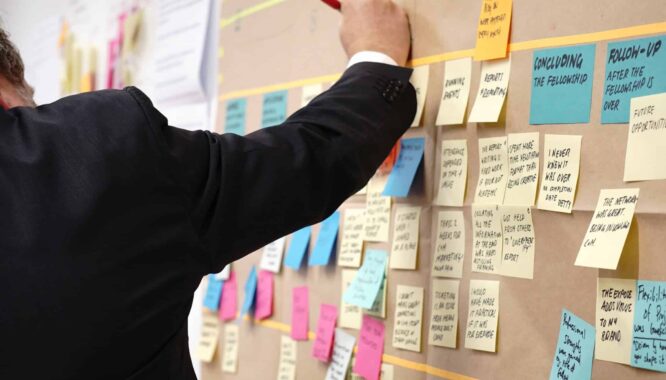
In 2020, the world witnessed one of the most shocking events: staying home due to the COVID-19 pandemic. The lockdown did not mean a total lockdown of activities, at least not the ones that could be done virtually. Employees of different workplaces had to use digital tools. It did not matter whether they were experts at it or amateurs before the pandemic. All that mattered was that work had to go on, and on it went regardless of the digital employee experience.
Related articles:
Digital Workplace: The Future of Our Work Environment
Digital Leadership in HR: Transform your Management System
What is Digital Employee Experience?
What comes to mind when the term “digital employee experience” is mentioned? An employee’s interaction with technology at the workplace? Or maybe the extent to which technology helps an employee at the workplace? Well, all these are not far from it. Digital employee experience (DEX) is a measure of how effectively people use their digital workplace tools, which enable productivity and proficiency. In every workplace, different situations affect each worker. Whether it is the recruitment process or the adjustment to the work demands of an organization, every worker reacts differently to happenings at the workplace as every person has different norms.
Digital employee experience (DEX) does not focus on how a worker reacts to these happenings but on the technical aspects, i.e., the technology needed for workers to perform their jobs effectively. There is a tendency to assume that DEX is important for some departments than others. For example, it would be impossible for the HR and IT departments to operate without digital technologies. At the same time, no one can deny that every department requires digital technology advancement in some ways. Whether it is to send emails, connect with a client virtually, or book appointments, the need for technology cannot be ignored for career-development and to secure the culture of engagement.
Digital Employee Experience vs. Employee Experience
Digital Employee Experience is essential to improve the ways of working that ultimately affects the overall experience. The term employee experience is all-encompassing. It refers to an employee’s perception of their job from their first day at work till the day they stopped working there.
On the other hand, the digital employee experience reflects the employee’s experience with technology; the time out of the employee’s entire tenure in a job when they had to use technology to not only carry out their duties and responsibilities but also to perform administrative tasks such as those related to payroll or PTO. Each of these interactions are collectively referred to as the digital employee experience.
What Makes a Positive Digital Employee Experience?
Technology is supposed to make life easy. If employees at a workplace are not finding things easy despite the technology in place, something is wrong. Excellent communication between the employer and employees is vital for the positive digital employee experience at a workplace. Not only this, employees should be able to have direct access to management as they would need to report back on certain things. There is also the need for transparency. The employees should be aware of all that is going on instead of relying on hearsay. And of course, there is the need for a digital workplace environment that new employees can easily adapt to.
Once all these are put into consideration, your organization will be able to provide a positive digital employee experience. However, you should note that there are still more factors that are needed in order for this digital employee experience to remain positive and empowered. For instance, your employees cannot repeatedly be using too many unfamiliar tools and expect that they would have a positive digital employee experience. In this case, you need to look for ways to streamline your digital tools and make them more simplified. This way, you not only make life easy for your employees, you improve their digital employee experience, which in turn improves productivity. Talk about a win-win situation.
You should also know that when you’re trying to streamline your digital tools and implement new systems for your employees, doing it too fast or all at once could overwhelm your employees. What you want to do would be to introduce the changes one step at a time without making them feel overwhelmed with all the initiatives the company is implementing.
What are the Factors that Influence DEX?
Some of the factors that influence the digital employee experience include:
- Slow loading times: When an employee looking to complete a particular task within a given deadline has to deal with a slow application, this would be discouraging and quite frustrating. This could, in turn, influence how they view technology at the workplace.
- Apps that crash without warning: Imagine working on an app, and when you think you’re done with whatever you were doing, the app crashes without warning. Nobody wants to be working with apps that keep on crashing. It also slows down productivity.
- Network connection issues: It can be extremely frustrating if you cannot complete a task simply because the network keeps acting up. This is exactly how your employees would feel as well: frustrated and discouraged. Work with your IT department to ensure that you are providing the best possible network for your employees at the office and offering alternatives to a slow home Wi-Fi connection if necessary.
- Outdated hardware and software: When an employee cannot enjoy a seamless digital experience simply because the hardware or software are obsolete, productivity is low, and so is the employee’s willingness to try out new technologies.
- Implementation Method: The way new tools are introduced into your organization may affect the digital employee experience. Suppose you fail to deliver the resources and information needed for your employees to adopt new technologies. In that case, a successful implementation of new digital tools might be impossible.
- Personalization: Regardless of the rules surrounding digital tools in an organization, almost every employee prefers using personalized digital tools. It, however, might not be allowed for employees to come with their digital devices. So, the least you can do is ensure that each employee has digital tools that are most suited to them, as this will determine whether or not this increases the engaged culture between employees.
Advantages of a Great Digital Employee Experience
Increase in employee productivity: An employee that experiences little or no difficulty with technology at the digital workplace will be glad to spend time working. And when this happens, the productivity levels are sure to increase.
Happy and satisfied workers: Once the employees of a particular workplace are provided with a great digital employee experience, they will be more pleased and delighted with their jobs. And nothing beats a happy and satisfied worker as this, in turn, will spur them to give you their best
Reduced frustration and difficulty with digital tools: When a company is committed to creating a great digital employee experience for their workers, it would indeed show in how the workers handle on digital tools. For example, after months of training, a worker is sure to get better at using specific digital tools. Once this happens, frustration and difficulty are reduced, leading to productivity at work.
More bottom-line profits: When an organization creates a positive digital employee experience, this organization can make more money due to increased productivity levels and avoid several costs such as over time and employee turnover. For this reason, ensuring a good digital employee experience will affect an organization’s bottom line positively.
Better communication: With the use of new technologies, employees and employers can send feedback to their team members and managers, thereby supporting a two-way feedback culture.
A sense of belonging: An employee that has a positive digital employee experience would feel like an important part of the team. Hence, they know that they are still indispensable whether they work virtually or physically at the organization.
Stable workforce: Once your employees are satisfied with their digital tools, you would be working with people who wouldn’t mind sticking around for a long time. Whereas, in a situation where your employees are frustrated with the digital transformation, you are likely to experience higher employee turnover.
Increased flexibility: In an organization where employees enjoy technology, there would be no need for a strict schedule. They would be able to connect from any part of the world. This way, they can create a balance between their work and personal lives.
How to Evaluate the Digital Employee Experience in Your Organization
It is almost impossible to improve the digital employee experience without an evaluation method. This evaluation is essential because it is the only way to determine whether your company is getting a positive return on all the investment it has put into DEX or a negative one.
The very first step is to find out what the employees feel about the digital aspects of their job. Without this, you will be unable to know if things are improving later. You can do this in several ways. You could find out how long it takes employees to use a digital tool, if there are network connection issues or cases of apps crashing suddenly.
You could also decide to take a look at your organization’s statistics on recruitment and retention of workers. Another way to find out how employees feel about digital tools is to find out from them directly. From this communication, you can gain insights into how to improve and achieve a great digital employee experience. This can be done through focus group discussions, surveys, and other methods. There are also many tools out there that allow you to collect feedback from employees. Once you’ve been able to determine your employees’ perception of digital tools, you are a step closer to evaluating the digital employee experience in your organization.
Who is Responsible for the Digital Employee Experience in Your Organization?
This is a question you need to ask yourself because this would determine several things. You do not want a person who has little knowledge about technology handling your digital employee experience. Nor do you want one that is inaccessible to your employees. In most organizations, the IT and digital teams are primarily in charge of the digital employee experience. However, since human resources teams tend to have direct communication to employees and their managers in terms of training and support when it comes to the work environment, it is a good idea to establish a collaborative effort between HR and IT.
While it is excellent for you to have a team handling the digital employee experience of your organization, it is also not bad to have suggestions from other stakeholders in the organization that could be of help.
What’s Next for DEX?
The COVID-19 pandemic caused a leap in the use of technology in the workplace. Everyone had to find a way of getting on with life in spite of a pandemic, and digital tools came to the rescue.
However, we cannot claim that the transition was smooth in all cases. Employees who were not exactly knowledgeable about digital tools were left behind, thereby negatively affecting productivity. Still, this would not in any way put a stop to the use of technology by employees of organizations. If anything, it would spur the need to achieve a positive digital employee experience.
There is no doubt still a lot of work to do in terms of improving the digital employee experience. Still, we are definitely on the right track, and we can only expect employees to improve in their use of digital tools moving forward.
Conclusion
You cannot desire a positive digital employee experience without being ready to put in whatever work it requires. It is one thing to want something while it is another to go for it.
Which are you doing? Talking about how much you want your employees to begin to enjoy using technology for their day-to-day work activities or implementing a well-thought-out strategy that would give your employees the optimal digital experience? It’s never too late to start evaluating and improving your organization’s DEX.

-360x360.jpg)


